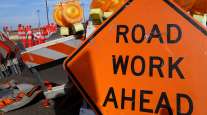Staff Reporter
COVID-19 Will Exacerbate Rural Transportation Funding Needs, TRIP Finds

[Ensure you have all the info you need in these unprecedented times. Subscribe now.]
Rural transportation needs face a significant funding deficit that will be compounded by the coronavirus pandemic’s blow to state revenue sources, according to a recent report from The Road Information Program.
Known as TRIP, the nonprofit group researches surface transportation issues and promotes policies relating to travel safety. The report, “Rural Connections: Challenges and Opportunities in America’s Heartland,” was released May 12 and indicates the United States faces a $211 billion funding backlog for needed repairs and improvements to the rural transportation system.
Dozens of statewide stay-at-home orders established because of the pandemic have resulted in a decrease in vehicle travel that has hurt state transportation revenue sources, particularly fuel taxes and tolls.
State transportation revenues estimated to decrease 30%-approx $50 billion-over next 18 months due to reduced vehicle travel as a result of COVID-19 https://t.co/M3H5irLRFm@TRIP_Inc @farmcredit @FarmBureau @AGCofA @ARTBA @aemadvisor #RuralRoads #InfrastructureNow #rebuildrural pic.twitter.com/lzTHwnmlMF — TRIP (@TRIP_Inc) May 12, 2020
“The health of the nation’s economy and the safety and quality of life in America’s small communities and rural areas ride on our rural transportation system,” said Dave Kearby, executive director of TRIP. “The nation’s rural roads and bridges already faced a significant funding shortfall, and that will only be exacerbated by the looming reduction in state transportation revenues as a result of decreased vehicle travel due to the COVID-19 pandemic.”
The American Association of State Highway and Transportation Officials projects the pandemic to reduce state transportation revenue by about 30% (approximately $50 billion) over the next 18 months.
The TRIP report, which takes into account data on infrastructure across all 50 states, indicates that rural roads and bridges still have significant deficiencies.
In 2018, some 13% of major rural roads were rated in poor condition, while 21% were considered “mediocre.” Some 16% were classified as fair, and the remaining 50% were in good condition.
TRIP Rural Roads Report 2020 by Transport Topics on Scribd
In 2019, 8% of rural bridges were poor or structurally deficient. These bridges are often posted with weight restrictions, limiting access for large vehicles such as commercial trucks, agriculture equipment, emergency service vehicles and school buses. Some 47% of rural bridges were in fair condition, meaning they were structurally sound but had developed minor deterioration on the deck, substructure or superstructure. The remaining 45% of rural bridges were in good condition.
The report found that traffic crashes and fatalities on rural, non-interstate roads are disproportionately high, occurring at a rate more than double the rate on other roads. In 2018, non-interstate rural roads had a traffic fatality rate of two deaths for every 100 million vehicle miles traveled. On all other roads, that rate was .88 death per 100 million vehicle miles traveled. Rural, non-interstate routes carried 22% of all vehicle miles traveled in 2018.
However, crashes on these routes resulted in 40% of the nation’s traffic fatalities that year (the most recent data available). The report said these crashes may be due to challenging driving conditions presented by rural roads, such as narrow lanes and shoulders, sharp turns and steep slopes.
The report also shows that America’s rural transportation network provides the first and last link in the supply chain that farmers, manufacturers, tourists and energy producers use.
“Unfortunately, due primarily to lack of investment over several decades, America’s infrastructure is in a dire state of rapid deterioration, and recent events show even more the importance of guaranteeing food arrives where it needs to be,” said Zippy Duvall, president of the American Farm Bureau Federation.
However, connectivity can be a challenge, as 66 cities with a population of 50,000 people or more do not have direct access to the Interstate Highway System.
“You cannot stock grocery stores, resupply medical facilities and rebuild our economy on the backs of broken roads and aging bridges,” said Stephen Sandherr, CEO of the Associated General Contractors of America.
TRIP recommends that the nation’s annual $28 billion investment by all levels of government in rural road, highway and bridge projects should be increased by 28%, to approximately $36 billion annually. The report also noted the need for adequate funding for the federal surface transportation program, pointing out that the Fixing America’s Surface Transportation (FAST) Act expires Sept. 30.
“The economic recovery from the pandemic could be hastened by significant investments in our nation’s transportation system to support job creation while making needed improvements to our roads and bridges that will serve our economy and enhance quality of life for all Americans for decades to come,” Kearby said.
Want more news? Listen to today's daily briefing:




